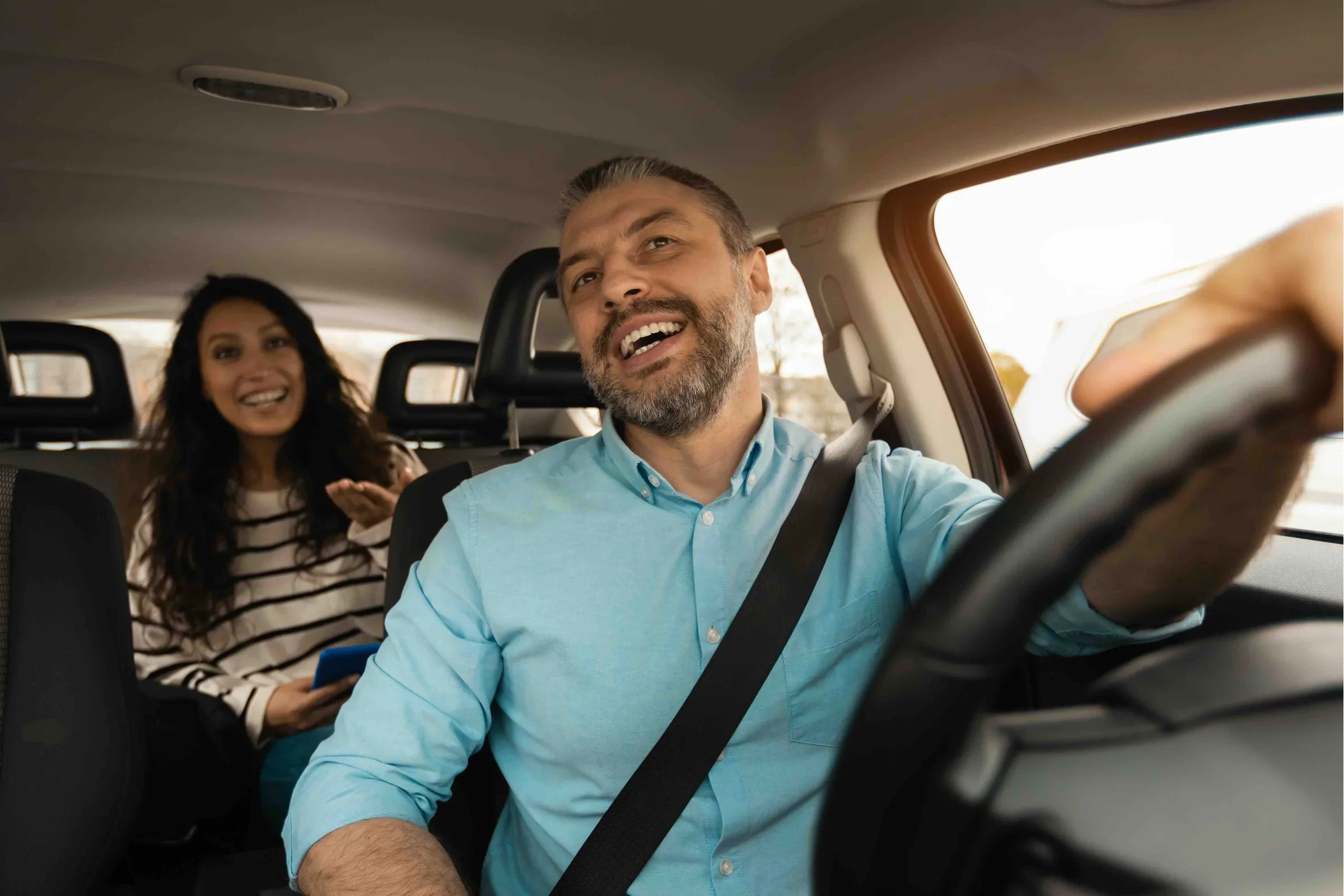The Future of Rideshare: Who Really Wins in the Shift to Automation?
As self-driving cars become more integrated into major rideshare platforms, one thing is clear — human drivers are being pushed out. While passengers continue paying high fares, the companies behind these platforms are keeping a larger share by replacing drivers with autonomous vehicles.

A major shift is happening in the rideshare industry. The growing collaboration between large transportation platforms and autonomous vehicle companies raises an important question: What does this mean for human drivers?
For years, these platforms have built their success on the work of independent drivers. But now, by integrating self-driving technology, they are signaling a long-term plan: reduce reliance on human drivers while maximizing profit.
But who really benefits from this shift? Let’s break it down.
How Much Do Platforms Keep From Self-Driving Rides vs. Human Drivers?
Most rideshare companies operate with a take rate — the percentage they keep from each trip. For human drivers, this often falls between 25% and 50% or more, depending on factors like promotions and demand.
However, the financial arrangement with autonomous fleet providers is very different. It’s likely that these companies are either:
✅ Paying a fixed fee per trip to self-driving car providers (much lower than what they take from human drivers).
✅ Taking a smaller revenue share while avoiding driver payouts altogether.
The result? The platform keeps a larger share per ride when it’s completed by a self-driving vehicle instead of a human driver.
And that’s exactly the problem.
What This Means for Human Drivers
The move toward automation isn’t just an experiment — it’s a clear indication that human drivers are a temporary necessity, not a long-term priority.
Here’s what this shift means for drivers:
1. Rideshare Work Is Being Automated
While human drivers are still needed today, transportation platforms are actively working toward a driverless future. Self-driving technology is expanding in several cities, and as it scales, these companies will have fewer reasons to keep human drivers on the road.
2. Platforms Can Charge Riders More While Cutting Out Drivers
Riders today are paying more than ever for trips, yet driver earnings have remained stagnant or declined over time. Why? Because platforms continue increasing their share of the fare.
With self-driving cars, they eliminate the need to pay drivers at all — while still charging riders premium prices.
3. Drivers Are Being Used Until They’re No Longer Needed
Some companies claim that human drivers and autonomous vehicles can coexist. But once self-driving cars are available at scale, what’s stopping them from completely eliminating human drivers?
A driver requires fair pay, flexibility, and operational costs — a self-driving car doesn’t.
The Double Standard: The Push for Self-Driving Cars While Underpaying Drivers
Rideshare platforms claim to support independent drivers, but in reality, they prioritize cost-cutting over fair pay.
Compare the numbers:
A human driver takes home just 50–75% of a fare after the platform’s cut — before gas, maintenance, and insurance costs.
A self-driving ride gives the platform a bigger profit margin because they likely pay a flat, predictable rate per trip — without sharing the earnings with a driver.
These companies won’t disclose the exact financial breakdown of their autonomous partnerships, but it’s safe to assume that a self-driving ride is more profitable for them than a human-driven one — all while riders continue paying high fares.
This isn’t about innovation — it’s about maximizing revenue while reducing costs to zero.
The Future of Rideshare: What Happens Next?
The integration of self-driving fleets is just the beginning. As technology advances, we can expect:
🚨 Fewer Job Opportunities for Drivers
As more self-driving cars hit the streets, human drivers will see fewer available trips. Some cities are already testing large autonomous fleets, and the trend will likely continue.
🚨 Higher Prices for Riders (Eventually)
Right now, fares are already increasing while driver pay remains low. But once self-driving networks fully control the market, what’s stopping them from raising prices even further?
Once competition decreases, passengers may have no alternative but to pay whatever the platform decides.
🚨 A Transportation System Without Human Workers
The gig economy was built on flexible work and income opportunities, but now, transportation platforms are shifting toward a workforce-free model. This move will have lasting effects on job availability, wages, and control over the rideshare experience.
What Should Happen Instead?
If transportation platforms truly valued their drivers, they would:
✅ Reduce their take rate to ensure drivers receive fair compensation.
✅ Disclose the terms of their self-driving partnerships to show whether they are profiting more from automation than from human labor.
✅ Commit to sustainable driver earnings instead of working toward eliminating drivers altogether.
Unfortunately, history suggests they won’t make these changes voluntarily.
Final Thoughts: A Business Model Built to Replace Its Own Workforce
The rise of self-driving rides isn’t about improving the experience for passengers or drivers — it’s about increasing corporate profits while phasing out human labor.
For now, drivers still power most of the industry, but the writing is on the wall:
Fewer driving jobs.
Higher fares for riders.
More money flowing to corporations.
If drivers and riders don’t push back against this shift, transportation platforms will soon operate without needing people at all — except to pay for the rides.
The real question is: Will drivers and passengers continue supporting companies that are actively working to replace them?

Omni Begins in Texas: A New Chapter for Riders and Drivers in San Antonio and Austin

Introducing Circles: A Safer Ride Option by Women and Nonbinary, for Women and Nonbinary

Why Real Drivers Still Matter

How Omni Matches You with a Driver
-muqvevx52d.webp)
How to Pay Less for Your Rideshare Trips While Supporting Fairness

Why Transparency in Rideshare Pricing Matters More Than Ever
-ygr49x6yaj.webp)
Should Riders Be Verified Like Drivers Before Their First Trip?

The Future of Rideshare: Who Really Wins in the Shift to Automation?
-y6dnitj3d7.webp)
Why the Future of Driving Might Look More Like Owning a Business

Download Before Your Trip! How to Use San Jose’s Local Ride App OMNI For Smoother Travel

We’re Not Just Another Ride-Hailing App — And That’s the Point
Other Posts


Fair fares, every time — no surge pricing. Download the Rider App.
Join 4,000+ startups building faster with us
-ncsawyuuju.webp)


insights, straight to your inbox.



